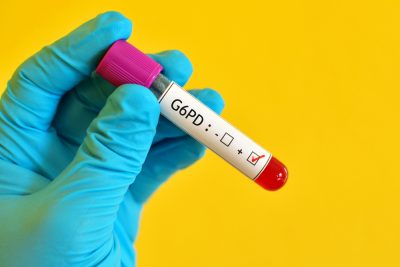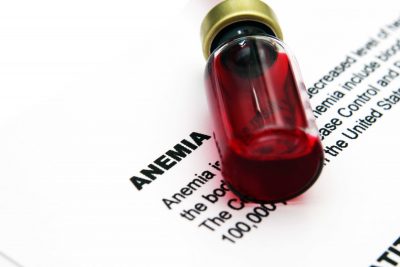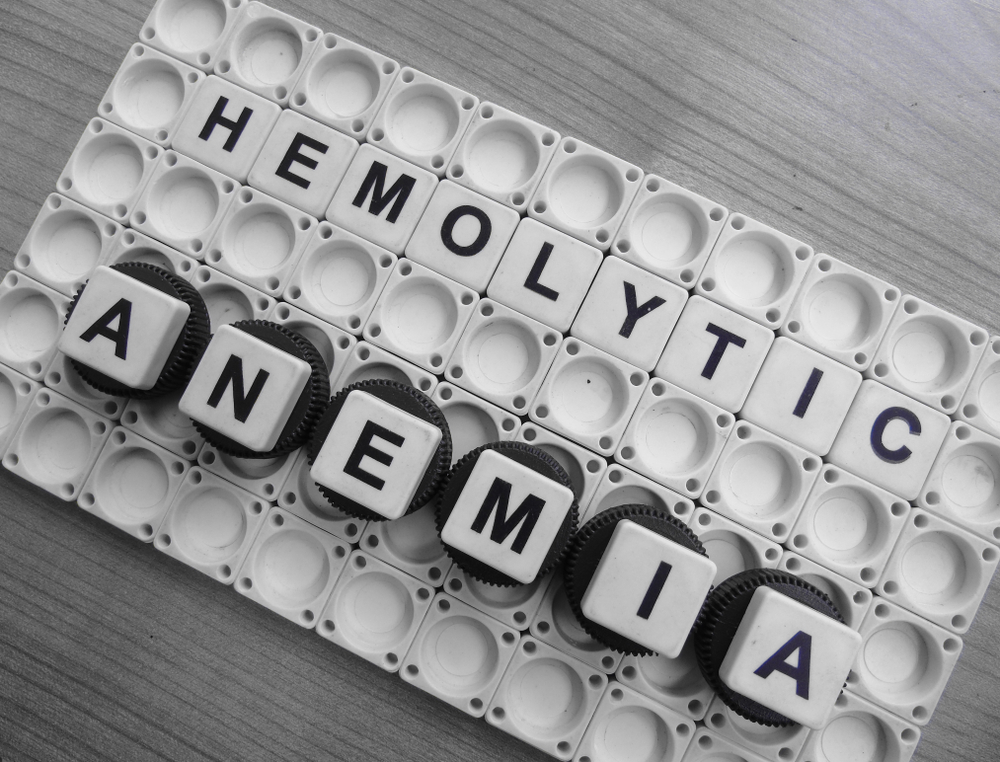G6PD deficiency occurs when the body lacks an enzyme called Glucose-6-phosphate dehydrogenase (G6PD).
This genetic disorder is mostly common in men, and the enzyme is responsible for the functioning of red blood cells. G6PD provides immunity to the red blood cells by protecting it from anything that can harm it.
G6PD is mostly common in Africa, and it affects more men than women.
People who have G6PD deficiency is as a result of insufficient production of G6PD by the red blood cells, or the inability of the produced G6PD to function properly.
The red blood cells need G6PD as a form of protection, so it doesn’t break apart, and this can be referred to as “hemolysis.” Hemolysis happens when too many red blood cells in the body are destroyed, and this may lead to tiredness and other symptoms.
Red blood cells that do not contain sufficient G6PD may be sensitive to certain medications and diets, and can also be susceptible to infections. When all of these factors stimulate a rapid loss of red blood cells, it can be termed “red blood crisis.”
However, the symptoms disappear when the cause has been treated, and in sporadic cases, G6PD deficiency can cause “chronic anemia” despite the exposure to stimulants.
Signs of G6PD Deficiency
Most people who have G6PD deficiency do not experience any symptoms. Still, when too many red blood cells are already damaged, a person may get to suffer from symptoms of hemolytic anemia.
These include:
- Severe tiredness or dizziness
- Shortness of breath
- Extreme fast heartbeat
- Jaundice
- Paleness
- Dark-colored urine
- Enlarged spleen
- Heart murmur
- Confusion
Having mild symptoms isn’t always a cause for alarm, because at this stage, the body is still making new red blood cells, and over time the anemia will improve. But if the symptoms are severe, you need to see a doctor or your healthcare practitioner immediately.
Causes of G6PD Deficiency
G6PD is a hereditary condition passed down from the genes of either parents or both. The gene that results in this condition is the “X chromosome,” and that is one out of the two sex chromosomes.
Naturally, men have a single X chromosome, while women have two X chromosomes. For men, once there is an alteration in the copy of the gene, it can result in G6PD deficiency.
Risk Factors Associated with G6PD Deficiency
These factors can control your risk of developing G6PD:
- Gender – male
- Hereditary
- If you are of Middle Eastern Descent
However, there is a possibility of you not having G6PD deficiency if you have more than one of these risk factors. But, you can consult your doctor if you are bothered about your health condition.
How is G6PD Deficiency Diagnosed?
 G6PD is often not diagnosed until you notice the symptoms. If your healthcare practitioner suspects that you have a case of G6PD, a blood test would be carried out to rule out other health conditions and confirm the diagnosis.
G6PD is often not diagnosed until you notice the symptoms. If your healthcare practitioner suspects that you have a case of G6PD, a blood test would be carried out to rule out other health conditions and confirm the diagnosis.
How to Treat G6PD
Treating G6PD isn’t a complicated process; it involves focusing on the symptoms by eliminating the triggers. Most times, you just have to treat an infection or quit the usage of a specific drug.
But if you develop severe anemia, you might need to be admitted to a hospital to get oxygen and fluids. In some cases, you might require a transfusion of healthy blood cells.
The best way to effectively treat G6PD deficiency is to reduce exposure to anything that can trigger this condition’s symptoms. With the right care, having G6PD deficiency should not reduce the quality of your life; you can still be healthy and active.
Living with G6PD
We have already established that you can live your best life, even if you have G6PD deficiency.
To live healthily, you need to stay away from triggers of hemolytic anemia, such as:
- Fava beans
- Moth balls
- Aspirin, and other aspirin-contained products
- Certain antibiotics
What is Hemolytic Anemia?
Red blood cells are responsible for transporting oxygen from the lungs to the heart and the entire body, while the bone marrow is responsible for the production of red blood cells.
When then there is faster destruction of red blood cells than the bone marrow’s production of red blood cells, “hemolytic anemia” occurs. There are two forms of hemolytic anemia, intrinsic or extrinsic.
Intrinsic Hemolytic Anemia
This condition develops when the red blood cells that are being produced by the bone marrow don’t function properly. this type of hemolytic anemia is often hereditary, same with people with sickle cell who have irregular hemoglobin
In other cases, a metabolic abnormality usually inherited can also lead to intrinsic hemolytic, such as people who have G6PD deficiency, or instability of red blood cell membrane. This condition can happen to anyone of any age, and it doesn’t occur with aging.
Extrinsic Hemolytic Anemia
Extrinsic hemolytic anemia can occur when healthy blood cells are destroyed by the spleen or autoimmune reaction in the body.
This condition can also happen from the damaging of red blood cells due to:
- Autoimmune disorders
- Leukemia
- Infection
- Side effects of medications
Causes of Hemolytic Anemia
Often, your doctor might not be able to discover the exact cause of this condition, but several drugs and diseases can cause hemolytic anemia.
There are several underlying causes of hemolytic anemia, such as:
- Infectious hepatitis
- Leukemia
- Lymphoma
- Autoimmune disorder
- Systemic Lupus Erythematosus
In some cases, you can develop hemolytic anemia from taking certain drugs, and this is called “drug-induced hemolytic anemia.”
Example of medications that can cause hemolytic anemia include:
- Antibiotics, like Ceftriaxone, ampicillin, penicillin or cephalexin
- Ibuprofen
- Rifampin
- Procainamide
- Aceptaminophen
A severe form of hemolytic anemia can occur when a person receives a red blood cell transfusion from an incompatible blood type. Every human is born with different blood types – A, B, AB, or O.
In a case where you receive a red blood transfusion from a wrong blood type, the antibodies in your body would attack the unknown blood type.
This would lead to the swift destruction of red blood cells, and it can be dangerous and result in death. For this reason, health care practitioners are cautious when checking blood types before performing blood transfusion.
Some causes of hemolytic anemia can be treated and resolved if your doctor can pinpoint the underlying cause.
Diagnosing Anemia
 Your doctor would often start with a thorough review of your medical history and carry out a physical test to detect any signs of pale or yellow skin.
Your doctor would often start with a thorough review of your medical history and carry out a physical test to detect any signs of pale or yellow skin.
Your doctor might gently press on your abdomen to know if you would experience any soreness, as that can be an indication of enlarged liver or spleen.
If your doctor believes that you might have anemia, a diagnostic test would be required. These tests would help to give a diagnosis by assessing you correctly.
Hemoglobin
This test is done to indirectly figure out the total red blood cells you have circulating in your body. It is done by measuring the functionality of the oxygen-carrying protein inside the red blood cells.
Reticulocyte Count
This test is used to calculate the amount of underdeveloped red blood cells your body is developing, which would, over time, mature fully into red blood cells.
Bilirubin
This test is used to calculate the number of red blood cells that have been broken down and processed by your liver. Generally, it measures the functionality of your liver.
Liver Function
This test is used to determine the liver enzymes, bilirubin, and protein enzymes present in your blood cells.
However, if your doctor suspects that you have intrinsic hemolytic anemia, your blood samples might need to be viewed under a microscope to assess its shape and size. A urine test might also be carried out to examine the presence of red blood cell breakdown.
In other cases, a bone marrow aspiration may be ordered by your doctor, too determine the amount of red blood cells being produced and its shape.
Treatment for Hemolytic Anemia
Treatment for hemolytic anemia depends on the severity of the condition, the underlying cause, your health, and your reaction to certain medications.
However, there are various treatment options, such as:
Corticosteroids
When you have extrinsic hemolytic anemia as a result of autoimmune abnormalities, your doctor may prescribe corticosteroids. It can help lower the activity of your immune system and stop the damaging of red blood cells.
Your doctor may also prescribe immunosuppressants, as it can also be used to achieve the same result.
Surgery
A surgical operation might be necessary if your spleen needs to be removed. The spleen is where damaging red blood cells takes place, and removing it, would drastically lower the rate at which red blood cells are damaged.
Surgery is mostly used as a second option when your body doesn’t respond to corticosteroids or immunosuppressants.
Transfusion of Red Blood Cells
Red blood cells transfusion is used to raise your blood count and replace the already damaged red blood cells.








COMMENTS